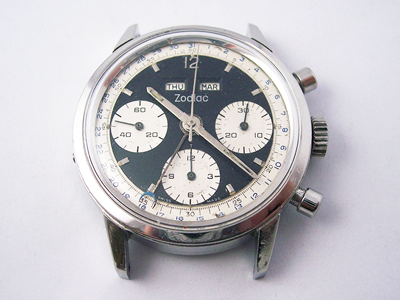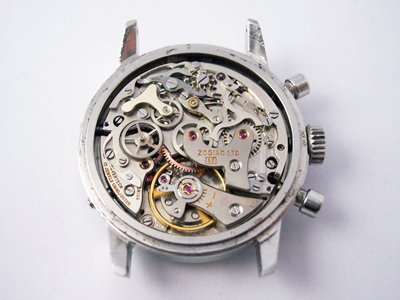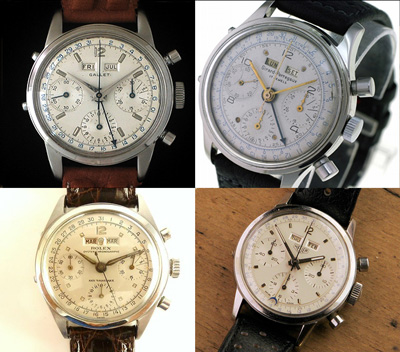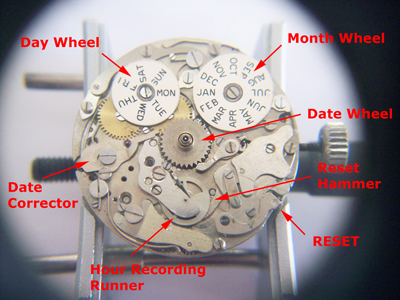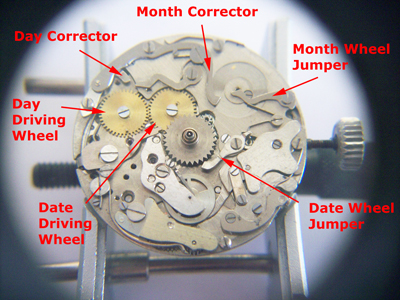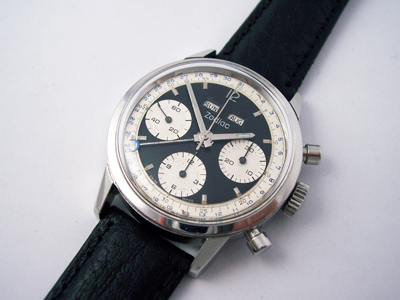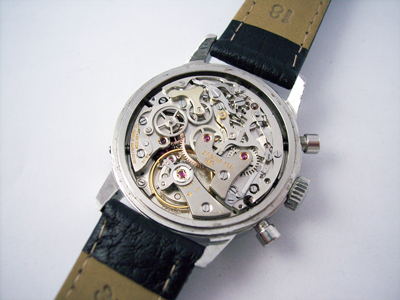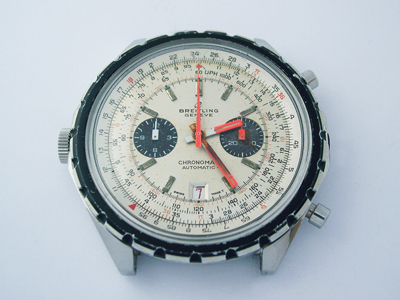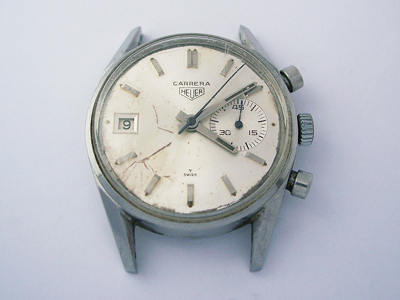Another Zodiac on the blog, this time a triple date chronograph.
(Click pictures to enlarge)
Dating to sometime in the late 1960’s this Zodiac would have been near the top end of their model range. The watch arrived in running condition and things looked promising on opening the caseback, as the movement was relatively clean, and had no sign of corrosion or mishandling.
Although the calibre in this watch is labelled as a Zodiac Cal. 83, it is in fact a Valjoux 72C. This calibre is known as a “triple date chronograph” as in addition to the 12 hour chronograph mechanism found in the Valjoux 72 on which this calibre is based, it also displays the date, day, and month on the dial.
This calibre was in production from 1946 until 1974, and was used in the watches of both large and small manufacturers in that time. Here are few more examples.
I’ve already covered most of the Valjoux chronograph calibres on the blog, but as this is the first 72C on blog, let’s have a closer look. This first picture shows the movement after the dial and hands have been removed.
While the day and month wheels are immediately recognisable, less so is the hour register at the bottom of the picture (or hour recording runner to give it it’s official name), which is powered directly from the mainspring barrel via a driving wheel when the chronograph is engaged. Also highlighted is the hammer mechanism which moves the hour register back to 12 when the reset pusher is pressed, and the date corrector which manually advances the date when the lower corrector on the left hand side of the watch case is pressed.
With the day and month wheels removed, you can see the components underneath.
The day and date driving wheels are powered by the hour wheel which sits underneath the date wheel, and their position is critical. If you look at them closely, you will see that both wheels have a pin protruding from them which advance the day and date forward as midnight approaches. If the wheels aren’t aligned correctly during re-assembly, the day and date won’t advance together.
The day, date and month jumpers with their associated springs are used to hold the wheels in place, and also provide the ‘flick’ of the registers when advanced.
You will notice that the month is not automatically advanced on this calibre. Given the differing number of days in the months, a fully automated calendar mechanism, or ‘perpetual calendar’, is definitely in high-end complication territory. In this calibre the month must be advanced manually using the upper corrector on the left hand side of the case.
The same corrector is used to manually advance both the day and month; pressing the corrector half way down advances the day, and pressing it fully in advances the month.
Cosmetically the watch was in decent condition, though the lume had fallen out of the hands, and blue paint was missing from the crescent on the date hand. After these minor problems had been sorted out, and the movement fully serviced, the case was cleaned and the crystal polished before reassembly. It does show some signs of age on close inspection, but overall it’s still a fine looking timepiece.
Rich.
** Many thanks to Tjeerd Jellema for letting me feature his watch on the blog. **

